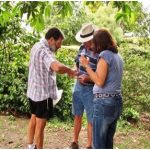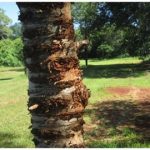TREE LIFE
February 2020
MASHONALAND CALENDAR
Tree Society Outings
At a recent Committee meeting there was much discussion about the Tree Society outings every month, and it was decided, for a number of reasons, that from March 2020 onward there would be only two organized outings a month.
There would continue to be the Botanical Garden walk on the 1st Saturday of each month, this is a venue which will always be of interest, every month there is something new and exciting to see.
We would then organize a 4th Saturday of the month afternoon outing every other month.
The 3rd Sunday of the month outing would then happen every alternate month also, i.e. one month there would be a 4th Saturday afternoon outing and the following there would be a 3rd Sunday of the month outing. These would continue to be advertised in Tree Life, on the Facebook page and on the Website and members would be sent a reminder a few days before each outing, as is being done at present.
The fuel situation, the declining attendance at our outings and the difficulties of finding suitable destinations for these outings are the reasons for this decision and we sincerely hope that members will continue to support and enjoy these happy, informative jaunts to places of interest.
Please remember that non members are always welcome, so bring a friend, or two, to enjoy a time of escape from the everyday hassles in some lovely garden or bit of bush. We will continue to try to organize the outings to venues as close to town as possible because of the fuel situation.
We look forward to seeing you soon.
February 1st 2020, Time: 08:30-10:00; Botanic Gardens, Harare. We will look at anything interesting! Join us for an interesting and informative walk in this amazing garden. Always something of interest. We will start at 08:30 a.m. from the usual place – the car park.
Bring a friend and introduce them to the wonders of this facility in the middle of Harare.
February 20th 2020, Patrick Mavros at 9.30 am ( this outing had to be cancelled because of the rain, we are hoping to be able to reschedule this meeting later in the year)
BOTANIC GARDEN WALK: 4 JANUARY 2020
A group of 6 people met in the Botanic Garden car park for the usual Tree Society first Saturday of the month walk.
Our walk coincided with a long period of hot dry weather and almost no rainfall (2.5 mm) which had begun on 14th December and therefore had been going for 22 days by this date. A number of people commented on how the Jacaranda trees appeared to have started to flower again, perhaps mistakenly thinking we were having a second October. Certainly, nearby specimens seen later did indeed have copious flowers. They looked a bit different to usual as they are bearing leaves with the flowers.
We took the usual path out of the car park past the Homalium abdessammadii towards the thatched gazebo. Here are species not from Zimbabwe but from other parts of Africa; these have in the past proved quite a puzzle to name but thanks to Tony and Jan’s work on identifying and labelling trees in the Botanic Gardens, we now know what most of these are. A tree which is a papilionoid legume, possibly a Millettia, still defeats us, however.
Slightly further on is a very fine specimen of Khaya grandifoliola (the Big-leaf mahogany). Its native range is from Guinea in West Africa through the DRC and Uganda. We are of course more familiar with our own native Khaya anthotheca, the Red mahogany; K. grandifoliola, as the name suggests has bigger leaflets and each leaflet has more lateral veins (12-15) as opposed to 5-9 in anthotheca.
Also climbing in this forested part of the gardens was the Purple hook-berry, Artabotrys brachypetalus with its distinctive hooks.
Across some open lawn and we came to a rather unhappy specimen of Citropsis daweana (Rutaceae). This species has two obvious and distinctive features; firstly, it is spiny and secondly the pinnate leaves have a very broadly winged rhachis. A third feature, namely that of having translucent gland dots as is typical of Rutaceae, was also apparent when holding a leaf up to the light.
Phyllanthus ovalifolius is a bushy scrambling shrub, climbing to many meters in height. It is a native species, occurring in the eastern and southern parts of Zimbabwe. It has been planted in the Gardens and has spread all over the gardens and has even escaped into the grounds of the neighbouring St Georges College (as was originally reported in Tree Life 262 of December 2001). Thanks to Mary’s hard work on capturing past editions of Tree Life, this account is now online at https://treesociety.org.zw/tree-life/262/
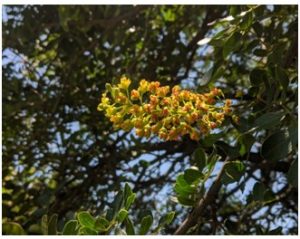
Tara spinosa flowers. Photo: Mark Hyde
On the way back, we had a look at the specimen of Tara (Caesalpinia) spinosa (the Tara tree) which we noticed a few months back growing adjacent to an extensive colony of bamboo. Tara spinosa is a spiny small tree with 2-pinnate leaves. On our previous visits it hadn’t been flowering but on this occasion it was – showing off its flowers which are small, yellow and borne in racemes.
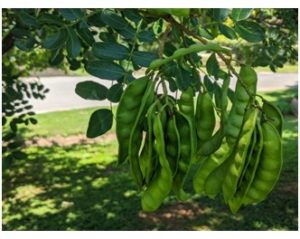
Tara spinosa fruit. Photo: Mark Hyde
This is not a common tree in Harare in my experience. I have only seen it once before and that was in the grounds of Larmenier. I had a quick look for this on Thursday and the species is still there – indeed there are two trees, both in flower.
As we came closer to the carpark, we came across Markhamia zanzibarica in flower. The flowers are basically yellow, but the corolla tube is covered in maroon spots and the inner part of the corolla lobes is almost entirely maroon.
One other thing we found hidden in deep shade was a spectacular Sansevieria in flower. It had large, almost spherical inflorescences and leaves folded in a U-shape. This has now been identified as Sansevieria hallii. It’s native range is Zimbabwe, Mozambique and the Limpopo province of South Africa.
As always, it was an interesting walk with plenty to discuss.
-Mark Hyde
TREE OF THE MONTH — BUSHVELD HONEYSUCKLE-TREE
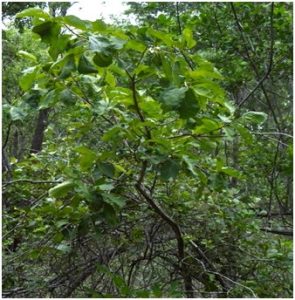
Turraea nilotica tree. Photo: Ryan Truscott
Our tree of the month is one I’ll always associate with New Year’s Eve, 2019.
My family and I were invited to pitch our tent for the night on a private property in Christon Bank.
We didn’t need a second invitation to escape from Harare before it erupted with fireworks.
And, to be embedded in nature is the best way to see in the new year, isn’t it?
But December 31 was sweltering, and I had to wait until late afternoon before I could venture off into the pristine woodlands that surrounded our campsite.
On the walk one unfamiliar tree stood out. It was a small species, covered in large simple leaves. I didn’t recognize it at first because I’d only previously seen it without leaves.
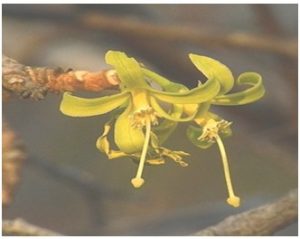
Turraea nilotica flowers. Photo: Ryan Truscott
The tree was Turraea nilotica. Known simply as the Turraea, or the Bushveld honeysuckle-tree, the species flowers at the height of the dry season when its bare branches accentuate the beauty of its flowers with their prominent staminal tubes.
I’d seen one in flower while I was clambering around the hills above Ewanrigg Botanical Gardens in September and identified it with the help of Common Trees of the Highveld, with its beautiful and timeless watercolours by Olive H Coates Palgrave.
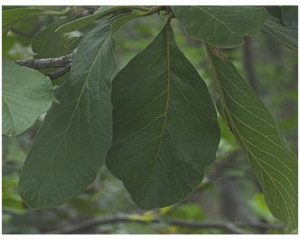
Turraea nilotica leaves. Photo: Ryan Truscott
Not far from the tree I had a chance sighting of an Apollo moth, Pseudaphelia apollinaris. This is a medium-sized yellow and white moth whose caterpillars feed exclusively on T. nilotica and others in the Turraea genus. The moth flies by day and by night, and in turn becomes food for birds, bats and bushbabies.
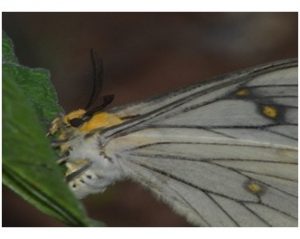
Apollo moth Pseudaphelia apollinaris. Photo: Ryan Truscott
A single tree supporting a chain of life.
Yet there’s more. Known in Shona as Chipindura, the species has long been used in traditional medicine.
Common Trees of the Highveld tells us that it was used in the past to cure liver and stomach pains.
“The roots are crushed, warmed with a little water and added to porridge, which is eaten three times a day until the pain is relieved,” the book says.
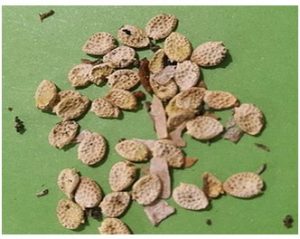
Turraea nilotica seeds. Photo: Ryan Truscott
Modern science has found that T. nilotica and its relative, T. robusta, are indeed rich in curative compounds called limonoids.
A 2015 study published in the Journal of Ethnopharmacology found that extracts taken from both species were effective against malaria parasites and some cancer cells, including human larynx carcinoma.
Southern Africa’s old growth miombo woodlands and the diverse life they support are surely a natural wonder. But they’re under siege throughout their range.
Power cuts and the demand for firewood to cure tobacco in Zimbabwe are destroying our woodlands at an alarming rate. And it’s happening faster than our ability to discover what they contain, including medicinal compounds like those found in the Turraeas that could prove useful to humanity.
It was a sobering thought for a New Year’s Eve.
-Ryan Truscott
MAUREEN SILVA-JONES: 1 JUNE 1940 – 17 JANUARY 2020
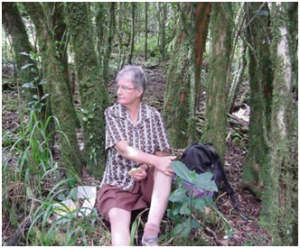
Maureen Silva Jones. Photo: Mark Hyde
There was a well-attended service at Maureen’s funeral service at Nazareth House on Thursday 23rd January 2020.
The following article comprises some personal recollections of Maureen. I’m sure the editor of Tree Life would welcome further reminiscences on other aspects of her life.
I first met Maureen in about the late eighties or early nineties. Maureen was Secretary of the Tree Society for 19 years from 1987 to 2006. It is hard to understate the importance of the role played by Maureen in the affairs of the Society during that period.
For the first 3 years from 1987 to 1990 until his sudden death in December 1990, she and her friend Dick Hicks who was the then Chairman basically ran the Society.
After that she continued to be the perfect Secretary – meticulous, well-organised, always thinking ahead to the next event, working behind the scenes to make sure plans were made so that the Society ran smoothly.
As a person, she was totally self-effacing and self-deprecating and very reluctant to take the limelight. Her knowledge of Zimbabwean trees was excellent but she was never willing to put herself forward and reveal the extent of her knowledge.
In addition to being Secretary, she was at various times, editor of Tree Life and was responsible for the tree mapping exercise which entailed hours of detailed work.
Maureen resigned as Secretary in 2006, I think because of worries over increasing deafness. She was very hard to replace. However, the Society did not entirely lose her as she continued to maintain the mapping scheme.
Perhaps the most enjoyable memories I have of Maureen were a series of trips that Andy MacNaughtan, Maureen and I did to the Sanyati Communal Land. These were usually done on a Friday. Leaving Harare at 6 am, we were down in jesse bush near the Sanyati growth point in 3 hours. After a day spent botanising, we would return in the dark with a haul of new and interesting plants.
In addition to her life in the Tree Society, Maureen was also Principal Officer of the BOC Zimbabwe Pension Fund, to which my firm provided actuarial services and after ceasing to be Secretary of the Tree Society she devoted her time to patchwork quilting.
-Mark Hyde
Outing to Christon Bank, 19 January, 2020.
Sunday morning under overcast sky but with no rain predicted we were meeting at the CABS offices parking area. We divided ourselves over the minimum of cars to save on the elusive fuel. Some considerable time had passed without any trips outside Harare and we felt like we were at last on a long deserved holiday trip.
Christon Bank, about 30 km from Harare is an extension of the National Botanic Gardens in Harare and is called Mazoe Botanic Reserve. Most of the seasoned tree lovers know that it’s a place with plenty of tree species in miombo woodland and one of our favoured spots. So, it was not amazing that we got a good crowd assembled there. Some had driven straight there and were waiting for the rest to arrive. We counted 20 people and another 4 children. It was a surprise to see Tom Muller and Mary Lovemore amongst them. Incapacitated by some old age afflictions, they couldn’t join us in the walk but remained seated under the trees while the rest of us went on our walk.
Mark took the reins and immediately started introducing some welcome newcomers to the system of tree identification by taking a single leaf from Terminalia stenostachya, Rosette-leaved terminalia, and then moving to Senna singueana, winter senna, with the compound leaf. The next tree had attractive yellow flowers in terminal sprays. Pterocarpus rotundifolius, round-leaved bloodwood. This species was well represented here and we were going to see more of them. Most were still young. Mark elaborated here that it is subspecies rotundifolius. Its leaves are paler green and have fewer leaflets than subsp. polyanthus which is more common in the Zambezi valley. Still on the main dust road that leads to the river a not very common tree that was obtruding in our path was Diospyros kirkii, pink diospyros, for the pinkish woolly hairs on the underside of its leaves. Close by another remarkable find was Securidaca longipedunculata, violet tree. Quite rare on our tree walks. Pity that its pink or violet flowers had long gone. Then Mark broke a small branch from another tree and showed us some seedpods which could only be Diplorhynchus condylocarpon, wild rubber. The seedpod really looking like a condyle or knuckle from a joint. It had milky sap and the paired carpels were still closed. Flueggea virosa, snowberry tree, with its white berries was easy to recognize. Catunaregam taylorii still named by some by its old name Xeromphis. Its shiny hairy leaves and decussate sharp and strong spines very distinctive.
With Mark leading the way, we were also introduced to some smaller plants, weeds and shrubs. We are very fortunate to have a specialist on this subject as not many books are found about weeds. The first one was Fadogia ancylantha, Makoni tea. A common, native suffrutex with leaves and branches in whorls of three. This is a well-known tea substitute which you will probably not find in a tree book. He also showed us another shrub which also sometimes has leaves in whorls of three: Hoslundia opposita, Orange bird berry. It has 4-angled branches and the leaves have a bad smell. Another small plant which is quite common is Pseudarthria hookeri, Bug catcher or velvet bean. Then I also got to know another common weed I never knew the name of: Ampelocissus with tendrils and swollen nodes and usually climbing. The species we saw is A. obtusata subsp. kirkiana according to Mark.
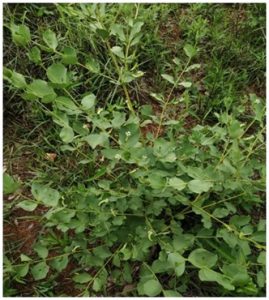
Makoni tea. Photo: Jan van Bel
We saw Combretum zeyheri, Large-fruited combretum, with opposite leaves and sometimes whorls of three. Mark indicated the difference with the pterocarpus pods, when Bilal’s sharp eyes found the only remaining old fruit. Searsia leptodictya, Rock searsia, the leaves looking slightly discolourous. Strychnos potatorum, Grape strychnos, with three veins from the base, impressed in the leaf. Allophylus africanus, African allophylus. had domatia next to the midrib.
A huge Albizia amara, Bitter albizia, was towering over smaller trees like Pterocarpus angolensis, Kiaat; Zanha africana, Smooth-fruited zhana; Vangueria infausta, Wild medlar, and Psydrax livida, Green-twigs with very smooth soft leaves. Another big tree and one of our most beautiful is Brachystegia boehmii, mufuti. We only saw one more which was still small. Mark explained that we were at the right altitude for this tree. Harare which is about 100m higher, being almost too high for it and therefore not a common sight there.
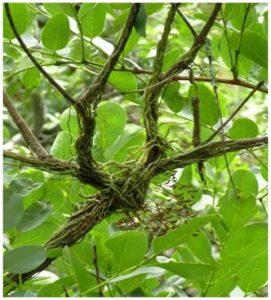
Microcoelia globulosa in-Mimusops zeyheri. Photo: Werner Fibeck
Further we spotted Brachystegia glaucescens, Mountain-acacia; Ximenia caffra, large sourplum; Pseudolachnostylis maprouneifolia, Duiker berry ; Lannea discolor, Live-long; Burkea africana, here it was noted that while most compound leaves have opposite leaflets, this is one species has alternate leaflets. The next one was more of a shrub but got Mark’s interest. Cissus cornifolia, Black wild grape. It has simple leaves and remarkable brown stipules. Dichrostachys cinerea, Sickle bush, with single spines, different from acacia which has paired spines; Flacourtia indica, Governor’s plum; Monotes engleri, pink-fruited monotes, which has a lighter green underside of leaf.
We were now walking on the high riverbank next to some big old trees. One unusual big Mimusops zeyheri, was attracting some special interest from Werner who has started joining us in tree walks to all the places where orchids can be expected. He turned our attention to some epiphytes on this tree. He named It Microcoelia globulosa, a leafless epiphytic orchid in seeds and is widespread in tropical Africa. Its small white flowers usually appearing in October.
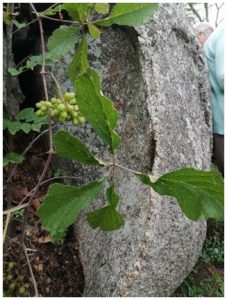
Ampelocissus obtusataub sp. kirkiana. Photo: Jan van Bel
We still found new trees to record. There was Dalbergia nitidula, Purplewood dalbergia, Commiphora africana, poison-grub commiphora, with velvety leaves. Boscia salicifolia, Willow-leaved boscia. Margaritaria discoidea, Pheasant-berry with plenty of young fruits. Gardenia ternifolia, Large-leaved gardenia. Lantana , which has smaller leaves than the other species and flowers only in the pink to violet scope.
Getting back to the cars, we joined Tom and Mary for our picnic. We all got what we came for and maybe more than we had expected. A variety we rarely see on our walks. Sitting down in the parking place we still saw more species we hadn’t recorded yet and thus forgotten now. Clerodendrum was one of them. But let us eat our sandwiches now.
-Jan Van Bel.
Taken from January 1975 Newsletter:
- Compliments of the Season and 1975 – Year of the Tree.
The production of tree seedlings and tree planting have already started. The Gum, although not an indigenous tree here is providing a good choice. The scheme aims (1) to create a general awareness of conservation needs and more specifically the value of trees in Rhodesia (2) to provide fuel and poles as soon as possible and (3) to ease the pressure on our indigenous trees. Gum seedlings are easy to obtain, cheap and they grow quickly into useful timber. When cut they re-grow quickly on the same area.
If fuel and hut poles can be provided on farm land, both African and European, our indigenous trees will stand a chance of surviving and then providing us with their profusion of flowers pods, medicines, bird habitats, colours and delights.
The old criticism of gums drying up water supplies has been brought up but this is not valid when the situation is understood and if tree planting and timber production is done properly. A green leaf is by nature a water pump driven by solar energy to feed the plant. A bigger plant will have more leaves and use more water on a per plant basis. But, on a per hectare production basis in cubic meters of fuel and poles one hectare of gums may use no more water than say ten hectares of msasa and yet produce the same output of wood or even more.
Excessive overplanting of a sponge area with any plant whether tree, maize, tobacco or even grass, may damage the water supply. Trees need to be considered as a crop if their products are of value, they are worth tending, feeding and watering. Reports can be found in the literature both supporting and criticizing tree planting. A careful study of each situation will always, as far as I am aware, show a different set of conditions and a different emphasis on what is important. In our case, Rhodesian land requires a protective vegetation cover, protection from the pounding rain drops, an open soil structure to facilitate rain infiltration and a healthy habitat for flora and fauna. But, our rapidly growing African population needs fuel, timber and more good European farming methods are now more intensive due to changing markets, shorter crop rotations and bigger tractors and equipment. We require a reappraisal of old methods and their effects upon our national resources, our heritage and our ability to stay alive until tomorrow. And that is not the tomorrow that never comes, but in 24 hours or 365 days time.
George Hall
Taken from Tree Life 162 August 1993
. . . THE PLANTING OF NON-INDIGENOUS TREES LIKE GUMS . . . “The Other Side of the Coin
The report on the Annual General Meeting of the Tree Society of Zimbabwe, as recorded in TREE LIFE No. 160 (June 1993), mentioned a question that was asked “about the severe destruction of woodland to make way for the planting of non- indigenous trees like gums”. The question, and the discussion that followed, raised issues that need to be looked at with more dispassion than I found in the report.
I was not at the AGM, and as a very new member of the Tree-Society I hope to avoid treading on the sensitivities of others, but my business has been trees for more than forty years and I would like to comment, provocatively perhaps, on the question of removing indigenous trees to plant exotics, particularly eucalypts.
The question of eucalypt plantations is one that arouses strong feelings, both for and against; and the arguments used by both the opponents and the supporters of eucalypts have often been based more on prejudice than on a balanced consideration of the facts (verbatim from FAQ 1985: The ecological effects of eucalypts).
There are few who take up cudgels when indigenous woodland is cleared to make way for exotic agricultural crops — maize, tobacco, wheat, soya bean, sugar cane, potatoes, and a host of others – or even for exotic fruit-producing tree crops such as citrus, mango, banana, avocado, papaya. Such activities are regarded as legitimate use of the land. But there is often a furore when indigenous woodland is cleared to make way for exotic wood producing tree crops, especially eucalypts. Is this not a case of double standards?
Upwards of 70% of Zimbabwe’s population has to rely on wood for cooking and heating, and our indigenous woodlands cannot sustain the demands that are made on them for fuel. At best they might grow at the rate of half a cubic metre per hectare per annum, but plantations of eucalypts in the general conditions of the Mashonaland highveld will produce 30 times that volume from a hectare of land. If indigenous woodland is cut over for fuel, it may be 20-40 years before any coppice regrowth can be cut over again. Eucalypts will sustain coppicing for poles and fuel every 5-8 years for at least three, possibly five, fellings before the stand needs replanting.
It should be clear, then, that even if it means sacrificing some indigenous woodland to establish plantations of fast-growing exotics, it is these very exotics that will reduce the amount of indigenous woodland cut each year by providing alternative – and easily renewable sources of wood.
Next to food and clothing wood is one of the most fundamental commodities used by man, particularly rural man, and one would hope that, rather than oppose plantations of exotic trees, the Tree Society would encourage them so as to take the pressure off what remains of out indigenous woodland. I hope I will cause no offence by cautioning against the narrow exclusivity of an Indigenous-Tree Society.
Lyn Mullin
TONY ALEGRIA CHAIRMAN


